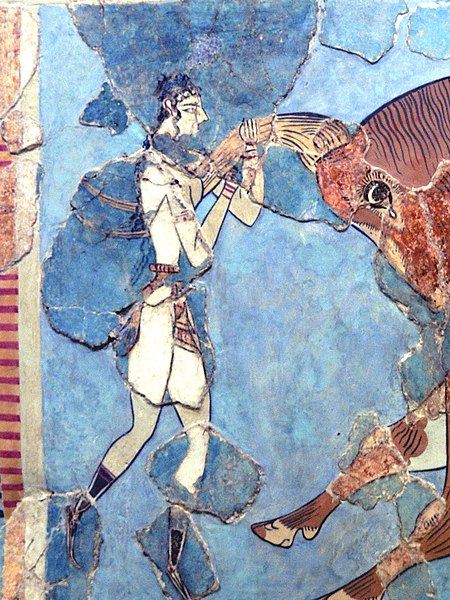The Bull-Leaping Fresco is the most completely restored of several stucco panels originally sited on the upper-story portion of the east wall of the Minoan palace at Knossos in Crete. It shows a bull-leaping scene. Although they were frescos, they were painted on stucco relief scenes. They were difficult to produce. The artist had to manage not only the altitude of the panel but also the simultaneous molding and painting of fresh stucco. The panels, therefore, do not represent the formative stages of the technique. In Minoan chronology, their polychrome hues – white, pale red, dark red, blue, black – exclude them from the Early Minoan (EM) and early Middle Minoan (MM) Periods. They are, in other words, instances of the "mature art" created no earlier than MM III. The flakes of the destroyed panels fell to the ground from the upper story during the destruction of the palace, probably by earthquake, in Late Minoan (LM) II. By that time the east stairwell, near which they fell, was disused, being partly ruinous.

Bull-Leaping Fresco
Close-up of central figure of the Taureador Fresco.
Close-up of right figure of the Taureador Fresco.
Close-up of left figure of the Taureador Fresco
Knossos is a Bronze Age archaeological site in Crete. The site was a major center of the Minoan civilization and is known for its association with the Greek myth of Theseus and the minotaur. It is located on the outskirts of Heraklion, and remains a popular tourist destination.
Reconstructed North Entrance
Bowl with fork handles, pottery. Knossos, Early Neolithic, 6500–5800 BC. Also a ladle, and a three-legged vessel from later periods
A coin of Knossos, depicting a Labyrinth
A labrys from Messara Plain








